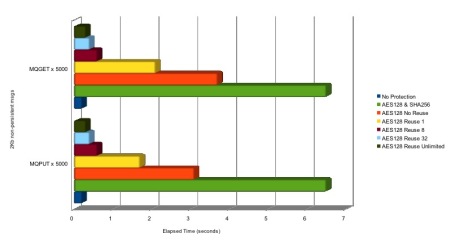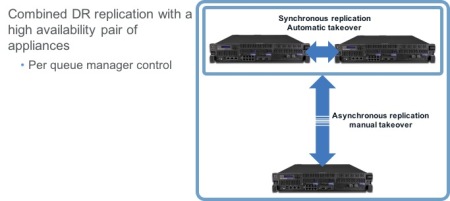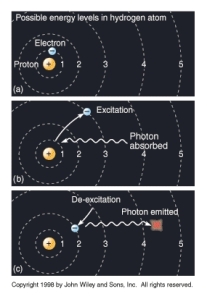
Some of you reading this blog may recall the great athlete Ed Moses – who had a record 122 race winning streak in just about the hardest event – the 400M Hurdles. You need to be strong, fast, and agile just to compete, and to keep winning you need to be reliable. Well, this is how we view IBM MQ, especially with the latest release – IBM MQ V9. You may have seen a recent blogpost on here that had a Statement of Direction talking about a new way of delivering IBM MQ – one that provided a Long Term Support release, and a Continuous Delivery release. The aim of this model is to give customers more choice to select either highly stable releases with just fixes, or releases that benefitted from additional function in the fixpacks.
TRY IT: Click here to get a free trial of MQ
UPDATE: There is a FAQ on the new support model. Read it here.
On April 19th, IBM announced MQ V9 which is the first release that moves to this new more agile delivery model. As such at the initial release it delivers a small set of additional capabilities that will be available to all customers. Then subsequent mod-level updates will deliver even more updates to customers choosing the continuous delivery stream, but all customers moving to V9 will get the benefit of the new capabilities being delivered in this release.
As with previous releases of IBM MQ, customers have a lot of choice in where and how they may want to deploy this version. IBM supports deployment of MQ – and MQ Advanced pretty much on every commercial IT environment where business critical applications may be exchanging data reliably, securely, and at scale. This could be on-premise, deployed in cloud environments like IBM Softlayer, Microsoft Azure or Amazon AWS. IBM also supports virtualization with many customers deploying in VM images, and also in Docker containers, which can be deployed anywhere, including in IBM’s Bluemix platform. This flexibility enables customers to make use of enterprise messaging to support deployments on-premise, on cloud or in hybrid environments.
So what are the key new features of MQ V9 being delivered in this release? Well there are a number of them that are called out in the announcement letters – so you can read the MQ V9 distributed announcement letter here. And the MQ V9 z/OS MLC announcement letter here. And you can read the MQ V9 One Time Charge announcement letter here. But below I will call out a few of the features that I think will be most important to customers.
One of the features likely to be most interesting is a change to the MQ Client Channel Definition Table (CCDT), which is needed by the MQ Client application to provide the channel definitions needed to connect to the MQ Queue Manager. This file is created automatically and prior to MQ V9 needed to be distributed to the client application prior to use. The big change from this new release is that the CCDT can be a web addressable file instead of needing to be distributed out to every client, and to then need to do that with every change. By having a web addressable CCDT accessed by URI, then there are much lower administration needs, and also the MQ infrastructure can be much more dynamic as changes can be made centrally and take effect quickly and without application disruption.
The second big change to the new release of MQ is in MQ Advanced Message Security (MQ AMS). This feature, which is a priced extension to MQ (available either separately or as a part of MQ Advanced) provides policy based encryption at rest of the MQ message contents. By using this capability, businesses can be assured that their message contents can only be unencrypted and read by the targeted application destination, and there is no risk of exposure should any security breach take place which provides access to the system or storage where the MQ Queue Manager holds its queues. This privacy and integrity has been assured by the generation of asymmetric keys for every exchange between client and queue manager, which provides an extremely high level of security, but can introduce a high overhead in terms of the processor cost of the asymmetric key generation.

With MQ V9, a new mode of operation is added to MQ AMS, called ‘Confidentiality’. In this mode there is an initial asymmetric key exchange then subsequent exchanges can reuse (to an extent that can be configured) a symmetric key. This still provides a high level of security and protection for the message content, but with a dramatically lower level of overhead in terms of encryption workload cost. IBM expects that due to the increasing importance of security and protecting systems and data from breaches, that this new feature of MQ AMS will help more customers protect their message contents and therefore their business and customer data. IBM expects to produce performance data for the new AMS configuration around the time that MQ V9 is generally available. But the early testing shows considerable improvement.
A further change for MQ AMS is the support of non-IBM JREs for use with MQ AMS. Previously applications written in Java that relied on a non-IBM JRE wouldn’t work with MQ AMS. In MQ V9 this has now changed so that suitable non-IBM JREs can be used, as well as IBM JREs, extending the ability of more customers to use MQ AMS.
There are a number of other new functions and capabilities available in MQ V9, such as updates to MQ Managed File Transfer capabilities – which are described in the announcement letter, and with the movement to a Continuous Delivery model customers should expect to see more capabilities being delivered in mod levels on top of MQ V9 in the future.
With the recent announcement of the End of Support for MQ V7.1 – announced here – along with the related end of support of the older separate versions of MQ FTE and MQ AMS, this latest release of MQ V9, along with the recent announcement of the update to the MQ Appliance provides customers with a strong set of choices of how to take advantage of the latest new releases as they plan to move off the older releases of MQ they may be using, keeping their deployment of MQ up to date and supported.
When you are taking advantage of the benefits of IBM MQ, you may not need to have to work as hard as Ed Moses did to be #1.
UPDATE: Mark Taylor has provided one of his highly useful videos detailing more of the new function in MQ V9. Watch it here.




